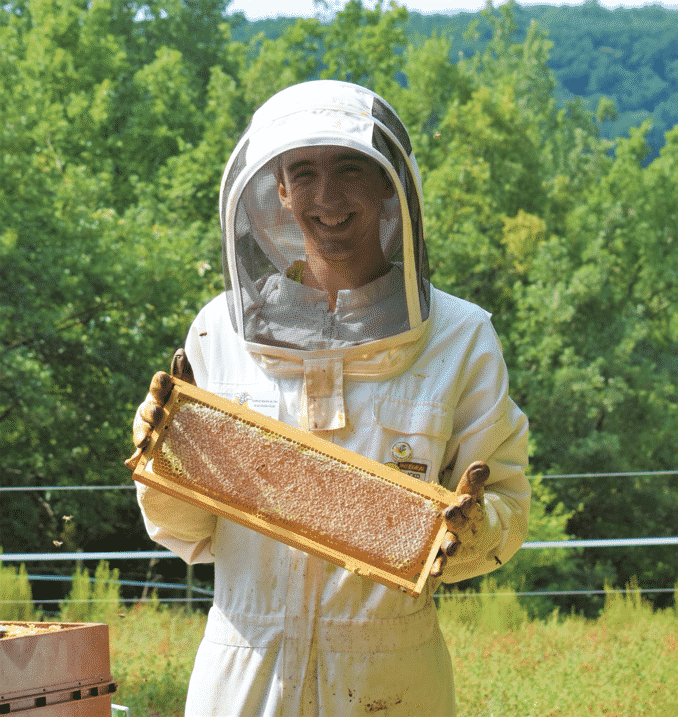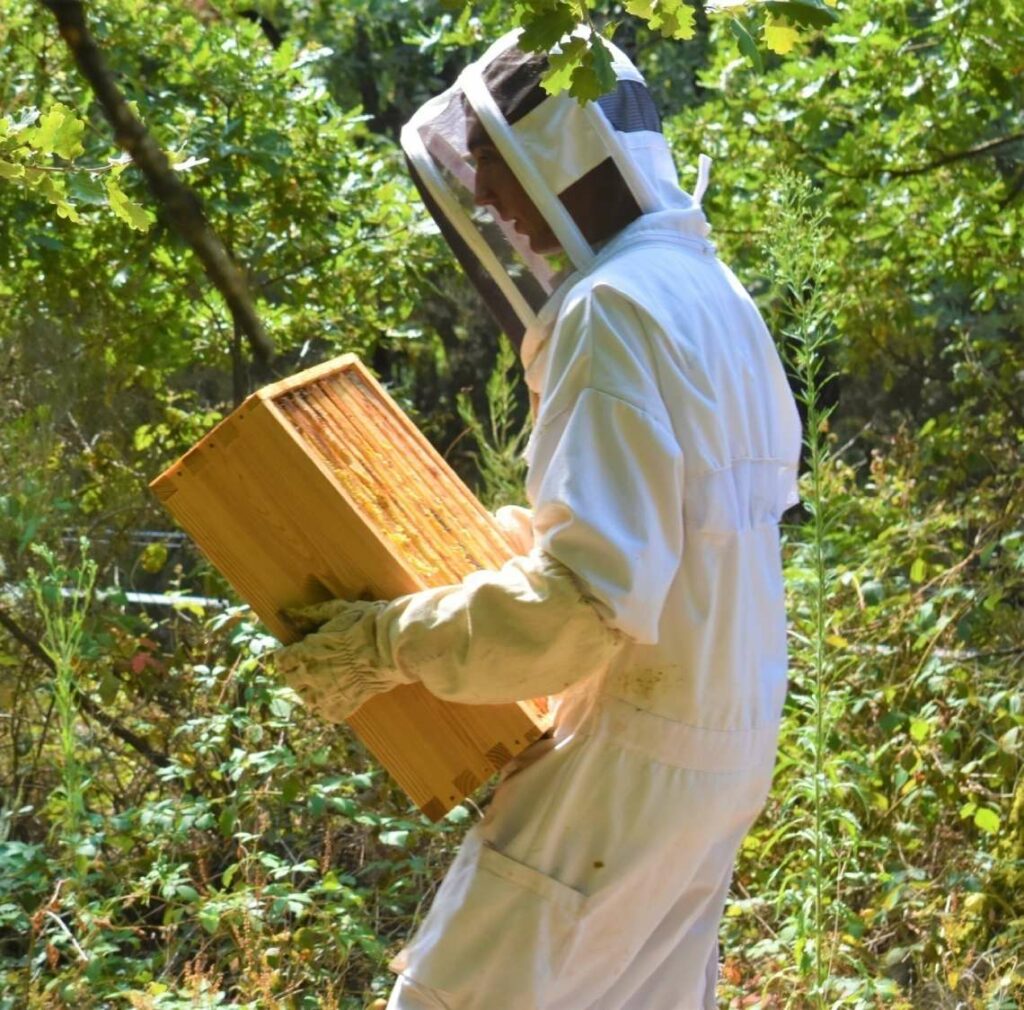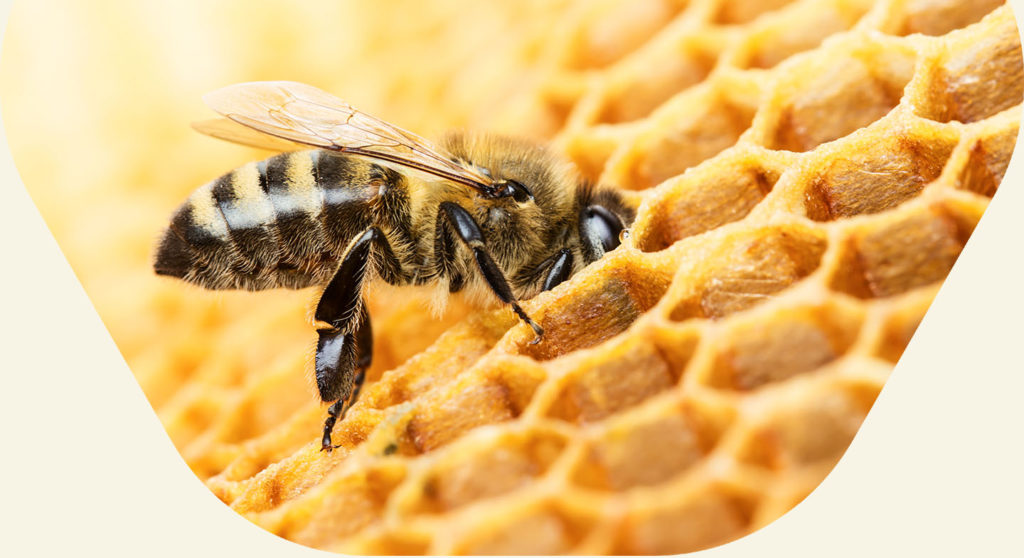API of the Month
Mathieu Domecq
Editor-in-chief of the API blog of the month
There is nothing better for any beekeeper than seeing their bees’ activity pick up again! On your API blog this time, I shall give you all my tips on how to place the rise and queen excluder and harvest the propolis (or bee glue as it is sometimes known).
The season is starting a little earlier this year. Rapeseed is in bloom in the south and most bees are growing at full speed! So keep an eye on your colonies each week as there will be a job or two to do: add a frame, divide, place the rise, etc.

Placing rises
The first fruit trees and willows are out and the first flowers are also appearing in the fields with rapeseed crops. This is a good way to invigorate the colonies. This period is also known as swarm fever.
Nectar is rising in the flowers and our bees are enjoying it, depending on the weather. Above all, you must not forget to place the rise as this may cause swarming. It does not need to be placed on all the hives at the same time. It is up to you to keep an eye out!
Of course, the rise must be placed in good weather. If your colony now occupies all the body’s frames with broods and honey/pollen, then the time has come. You should see a large population inside, which almost does have enough space (you cannot see the bottom of the hive between the inter-frames). The bees may also have placed wax containing honey on top of the frames: it is time to act very quickly!
To do this, prepare a rise with waxed or stretched frames and position it on the body. Some people will add a queen excluder between the two items (see next point in the article).
My advice is to take advantage of this opening to count the number of brood frames and check that there are no royal cells. If this is the case, or if your colony already has 7/8 brood frames, then divide!
For beginners, who have been able to purchase a wintered swarm on six frames in the last few days, consider quickly expanding the colony with waxed frames. In the next ten to fifteen days, you can place the rise.

Making propolis
In addition to honey, you may have decided to harvest the propolis, the resin from the beehive which has many properties… and you can. For this purpose, you will find propolis excluders or mats in your beekeeping shop. These are not quite the same as queen excluders.
Once you have them, you place the excluder on top of your body frames or your rise until July. This will ensure high-quality propolis.
Place a thick frame cover or your feeder upside down on top of this excluder to create an air space. As the bees do not like this, they will clog the spaces with the propolis.
A few weeks or months later, harvesting it is easy: place this excluder in the freezer for 24 hours (to make the propolis brittle), then roll the excluder on itself and squeeze it over a bucket to release the propolis. All you have to do is store it raw in small pots for your dishes!
Should I use a queen excluder?
You could say that there are two schools of thought on how to use the queen excluder. Personally, I do not use it too much any more, but under certain conditions it is very practical!
Advantages:
- prevent the queen from laying in the rise
- avoid having pollen stored in the rise, which may cause mould during the winter
- since you see the queen in the body, the rise can be inspected regularly without the risk of killing it.
- it limits the transmission of diseases between levels.
Disadvantages:
- the risk of swarming is accelerated due to lack of space
- the bees sometimes refuse to pass through the queen excluder
- it is an extra investment
You will find queen excluder made of moulded plastic and metal and with a wooden frame:

When you place rises, do not forget to take photos and we shall post them on our website from social media channels with the hashtag: #apifonda #apiinvert!
We shall be back next month on your API blog with your faithful partner, Les Ruchers De Mathieu!

LES RUCHERS DE MATHIEU
Honey & Beekeeping Shop
Photos ©lesruchersdemathieu


